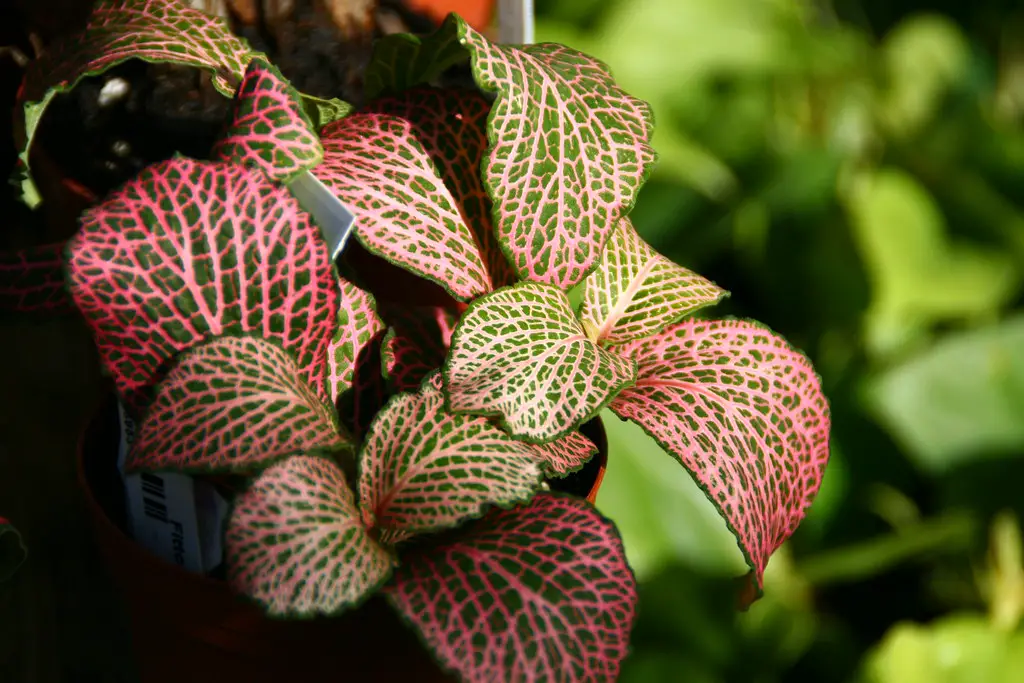The Nerve Plant, also known as Fittonia albivenis, is a stunning houseplant celebrated for its eye-catching mosaic pattern of veins. Often found in striking shades of pink, white, or red against a deep green backdrop, these colorful veins are the inspiration for its common name. Originating from the rainforests of South America, this attractive plant adds a touch of the exotic to indoor spaces.
In addition to its aesthetic appeal, the Nerve Plant is also cherished for its compact growth habit. With lush, spreading leaves, it makes an ideal ground cover in terrariums or as a statement piece on desks and tabletops. Though considered by some as a somewhat finicky plant, it can thrive with the proper care and attention.
As a tropical plant, the Nerve Plant has specific requirements regarding light, moisture, and humidity. Meeting these needs can be a rewarding challenge, resulting in a vibrant and healthy specimen that brings a dynamic, natural beauty to any setting.
| Attribute | Details |
|---|---|
| Common Names | Nerve Plant, Mosaic Plant, Painted Net Leaf |
| Botanical Name | Fittonia albivenis |
| Family | Acanthaceae |
| Plant Type | Perennial Herb |
| Mature Size | 3-6 inches tall, 12-18 inches wide |
| Sun Exposure | Bright, Indirect Light |
| Soil Type | Peat-based, Well-draining |
| Hardiness Zones | 10-11 (outdoors) |
| Native Area | South America (Peru) |
Nerve Plant Care
Caring for a Nerve Plant can be a fulfilling experience for both novice and seasoned gardeners. Its need for consistent moisture and high humidity mirrors its native tropical rainforest habitat. The soil should be kept evenly moist but not soggy, and a humid environment should be maintained, especially during winter when indoor heating can dry the air.
Lighting is another critical factor in the Nerve Plant’s care. While it enjoys bright, indirect light, too much direct sunlight can scorch the leaves, causing them to lose their vibrant coloring. Similarly, inadequate light can lead to dull, less defined vein patterns. Balancing these aspects of care will lead to a thriving Nerve Plant with bright and vivid foliage.
Light Requirement for Nerve Plant
Bright, indirect light is essential for the Nerve Plant. Direct sunlight may cause leaf burn, while low light can lead to loss of vivid vein coloration.
Soil Requirements for Nerve Plant
A peat-based, well-draining soil mix with added perlite is best for Nerve Plant. Good drainage prevents waterlogging and root rot.
Water Requirements for Nerve Plant
Watering the Nerve Plant consistently to keep the soil evenly moist is essential. Reduce watering during the winter months, and never let the soil become soggy.
Temperature and Humidity
Nerve Plants prefer temperatures between 60-80°F and high humidity levels. Misting and placing near a humidifier can help maintain optimal humidity.
Fertilizer
Use a balanced, liquid houseplant fertilizer diluted to half strength every 2-4 weeks during the growing season.
Pruning Nerve Plant
Pruning helps maintain the shape of the Nerve Plant and can encourage bushier growth. Pinch back the tips as needed.
Propagating Nerve Plant
Propagation is achieved through stem cuttings. Place cuttings in water or moist soil for rooting.
How To Grow Nerve Plant From Seed
Growing Nerve Plant from seed is not common and can be quite challenging. Propagation from cuttings is more reliable and faster.
Common Pests & Plant Diseases
Aphids
Aphids can be treated with insecticidal soap or neem oil.
Powdery Mildew
Avoid overhead watering to prevent powdery mildew.
Common Problems With Nerve Plant
Drooping Leaves
Drooping leaves may indicate under-watering or low humidity.
Loss of Color
Loss of vibrant vein color may be due to inadequate light or nutrient deficiency.
Pro Tips
- Keep the soil evenly moist but avoid overwatering.
- Place in bright, indirect sunlight.
- Maintain high humidity through misting or a humidifier.
- Use well-draining, peat-based soil.
- Monitor for pests and treat early to prevent infestation.




